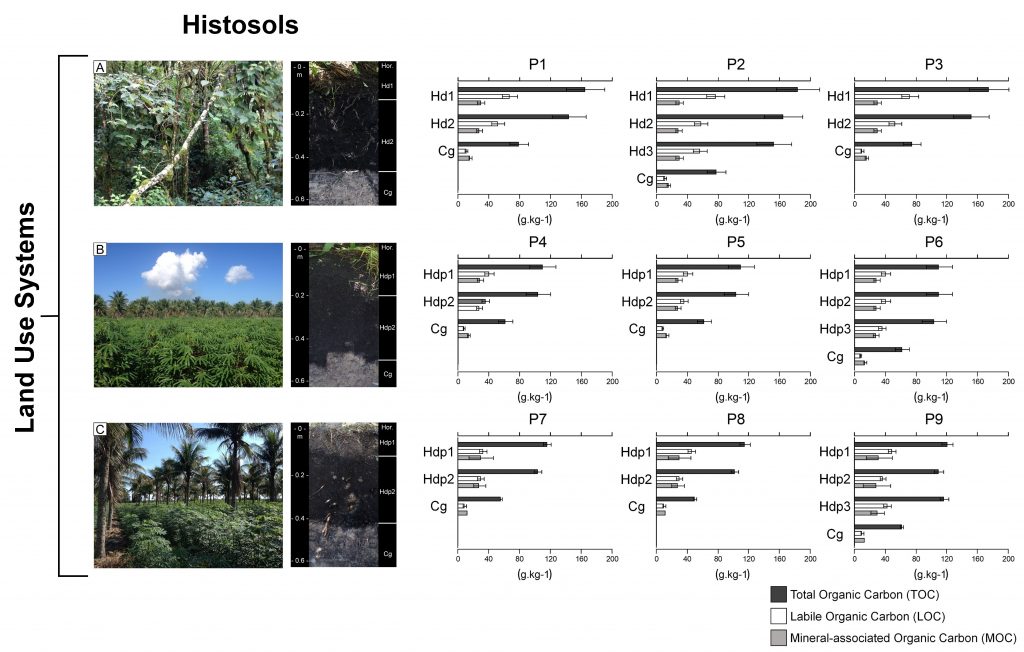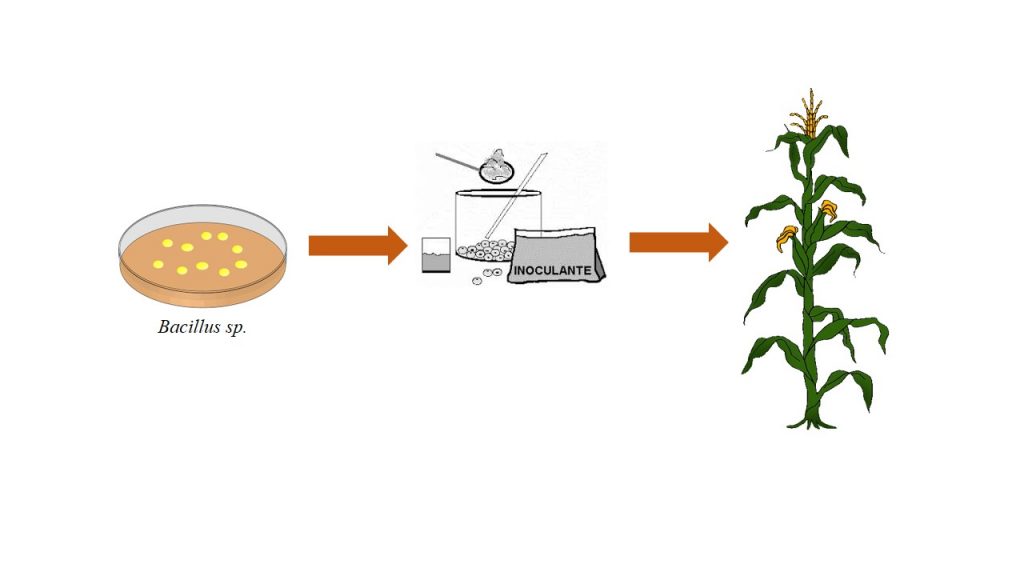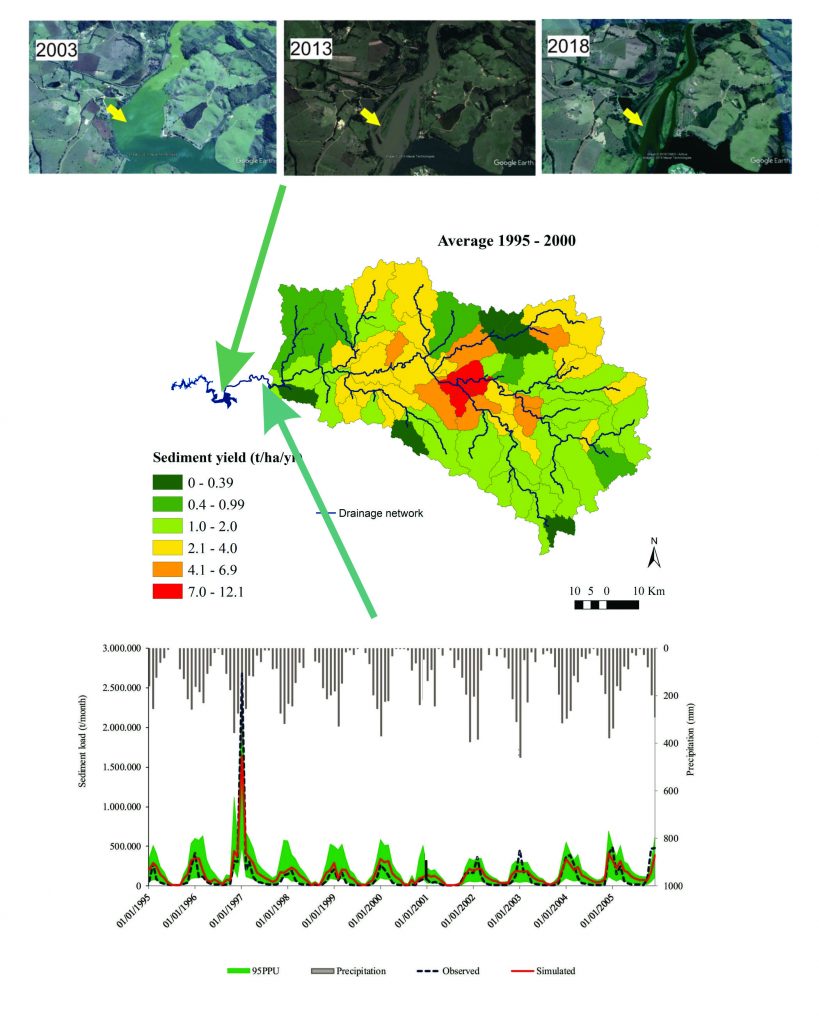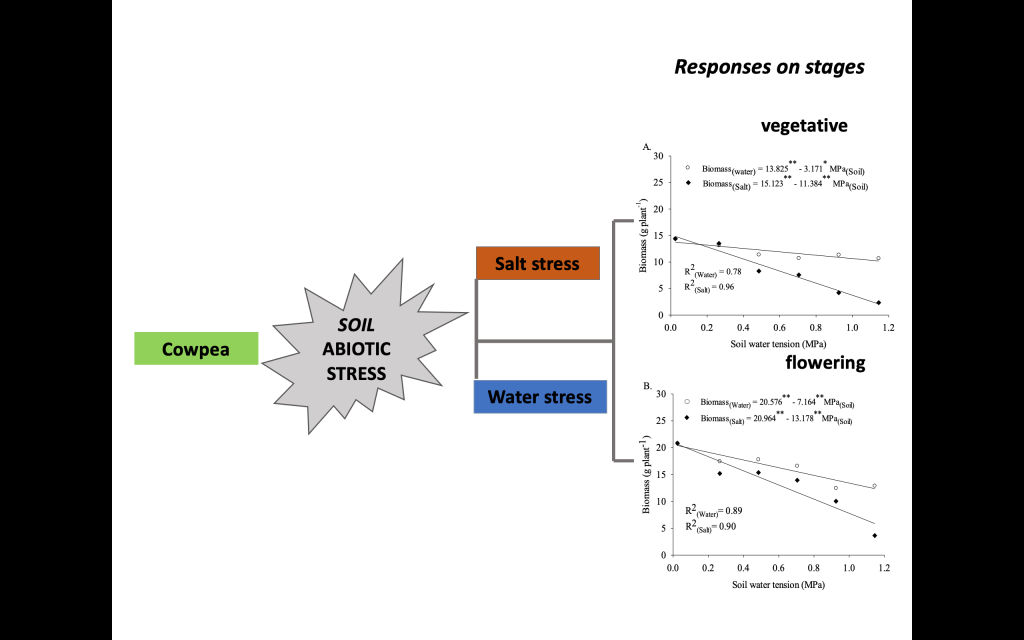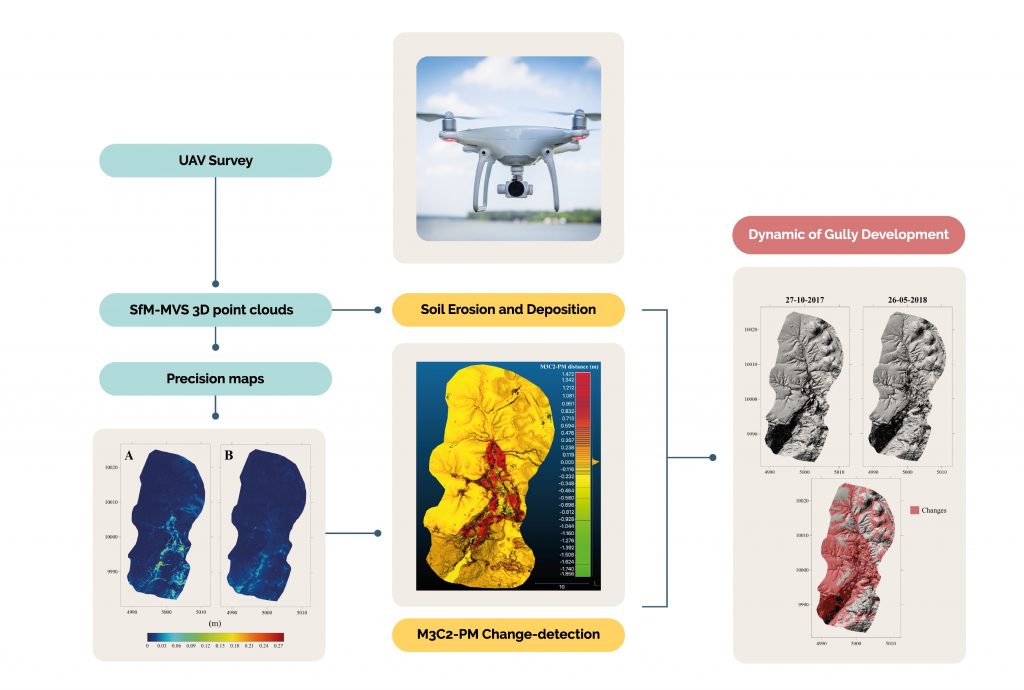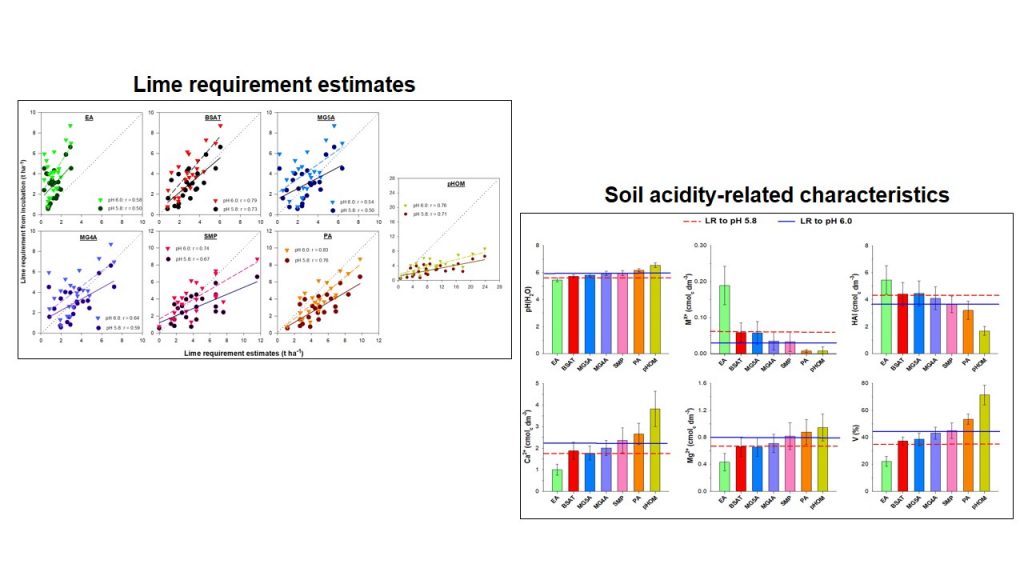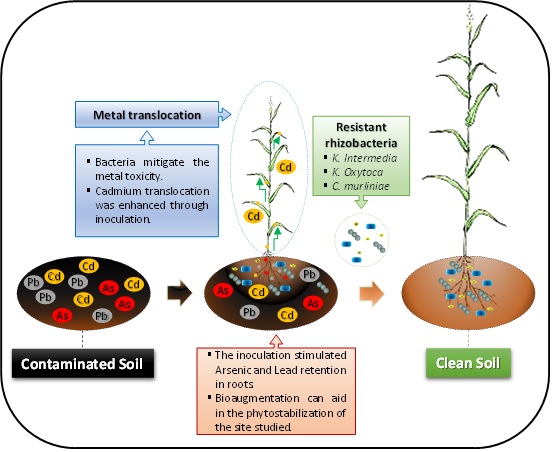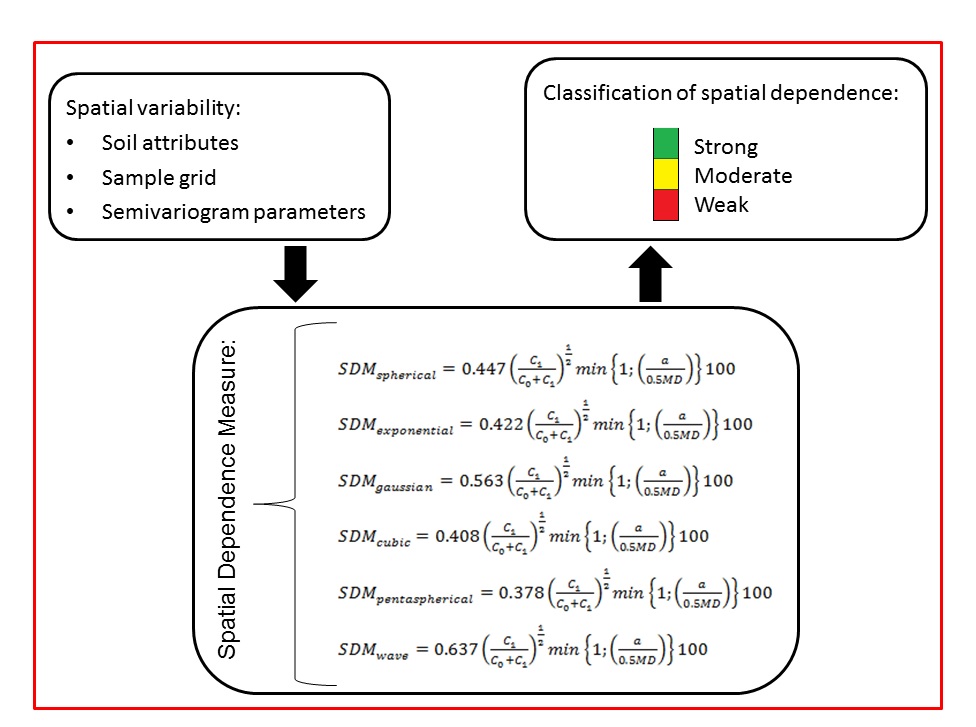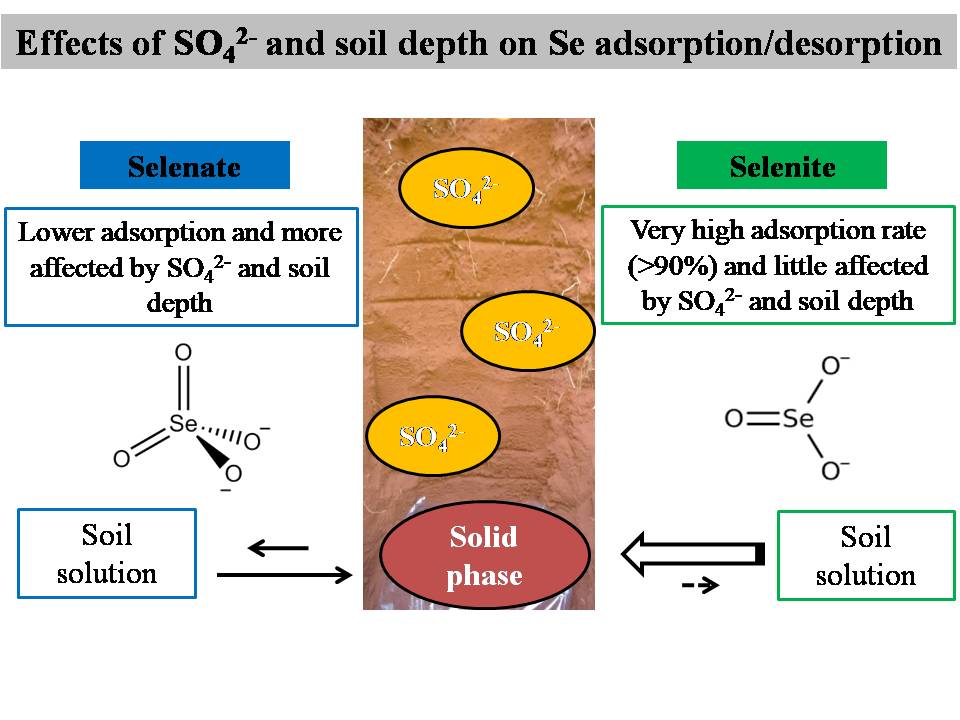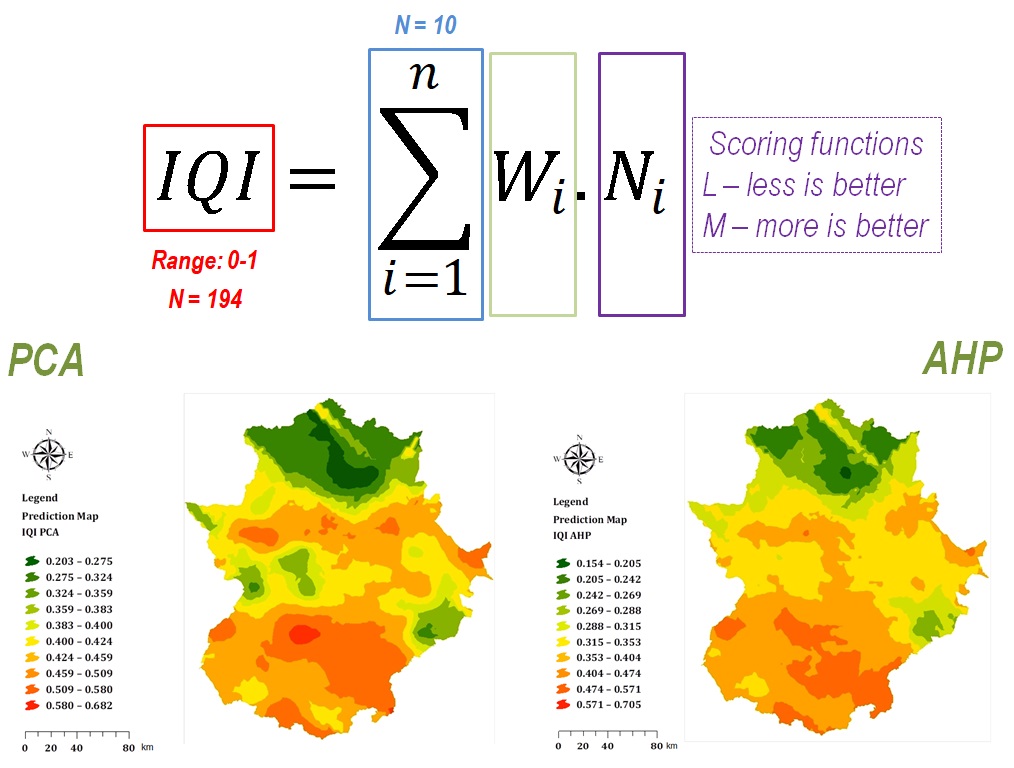Volume 44, 2020
Impact of land use on Histosols properties in urban agriculture ecosystems of Rio de Janeiro, Brazil
01/set/2020
ABSTRACT Histosols provide several ecosystem services, related mainly to their reserves of carbon and nitrogen. Management practices in these soils can increase the mineralization of organic matter and contribute to the emission of greenhouse gases. This study aimed to investigate the effect of tillage with plowing and drainage on Histosol properties in three land use systems located in the municipality of Rio de Janeiro, Brazil. Three areas subjected to different land use systems over the last twenty years were chosen: […]
Isolates of Bacillus sp. from garlic: effect on corn development and plant growth-promoting mechanisms
21/out/2020
ABSTRACT Corn and garlic are important crops to Curitibanos region (state of Santa Catarina – Brazil), often planted in alternate cropping seasons. Production costs are high, especially due to N fertilizer, since they are highly demanding in N. In addition to reducing economic costs, the search for environmentally sustainable technologies has stimulated the study of interactions between plants and growth-promoting microorganisms. Rhizobacteria, e.g., Bacillus sp., have been presenting as growth-promoting microorganisms. Five isolates of garlic rhizosphere from 27 individuals of […]
Hydrosedimentological modeling in a headwater basin in Southeast Brazil
23/out/2020
ABSTRACT Hydrosedimentological modeling is a useful tool to predict the water dynamic in a basin and for water resources management. This study aimed to i) evaluate the ability of Soil and Water Assessment Tool (SWAT) to model sediment load and continuous monthly streamflow in the Mortes River Basin (MRB) in Southeastern Brazil; ii) estimate the sediment yield spatially distributed by sub-basins; iii) estimate the sediment load export to the Funil Hydroelectric Power Plant reservoir (FHPP), located in the MRB outlet. […]
Comparison of water and osmotic potentials on Vigna unguiculata stress response
11/nov/2020
ABSTRACT Drought and soil salinity are the main abiotic stresses in semiarid regions of the world. This study aims to evaluate the effect of water tensions generated by the reduction of soil moisture and salt on the leaf water potential of cowpea (Vigna unguiculata L. Walp). The experiments were conducted in a randomized complete block design, with a 6 × 2 factorial arrangement consisted of six soil water tensions (0.025, 0.265, 0.485, 0.705, 0.925, and 1.145 MPa) and two tension […]
Sediment source and volume of soil erosion in a gully system using UAV photogrammetry
11/nov/2020
ABSTRACT Gully erosion is a severe way of land degradation. Gullies threaten the sustainability of agro-ecosystems, causing quantitative and qualitative reduction of groundwater, farmland productivity, and waterways sedimentation. Since the gully development on the surface begins with water flow and sheet erosion, accurate monitoring of the erosive processes in a gully system and its quantification is key for the development of effective strategies to control soil erosion in gullies. Here, we demonstrate the first use of unmanned aerial vehicle (UAV) […]
Evaluation of traditional methods for estimating lime requirement in Brazilian soils
11/nov/2020
ABSTRACT The optimal soil pH for most annual crops in Brazil varies between 5.7 and 6.0. Numerous methods have been developed for estimating lime requirement (LR), but they vary widely in their predictions and fail to raise pH to desired values for optimum crop production in the highly weathered soils of Brazil. The objectives of this study were to (i) compare seven traditional methods for estimating LR in Brazilian soils; (ii) assess the effects of LR predicted by these methods […]
Bioaugmentation-assisted phytoremediation of As, Cd, and Pb using Sorghum bicolor in a contaminated soil of an abandoned gold ore processing plant
05/out/2020
ABSTRACT The two main bottlenecks for a successful phytoremediation program are the metal availability in soil and the metal uptake and transfer to shoots of high biomass plants. Several agronomical practices have been tested to boost the bioavailability of metals in soils and accumulation in plants. Here we assessed the feasibility of plant-growth-promoting bacteria (PGPB) isolated from a site contaminated by gold ore processing activities to assist the phytoremediation of As, Cd, and Pb by Sorghum bicolor and mitigate the […]
Geostatistical-based index for spatial variability in soil properties
15/set/2020
ABSTRACT The assessment of spatial variability of environmental variables such as soil properties is important for site-specific management. A geostatistical index that allows quantifying and characterizing the structure of spatial variability is fundamental in this context. Thus, this study aimed to develop a new spatial dependency index, called the Spatial Dependence Measure (SDM) for the spherical, exponential, Gaussian, cubic, pentaspherical, and wave semivariogram models; and comparing it with some of the indexes available in the literature. The SDM is also […]
How sulfate content and soil depth affect the adsorption/desorption of selenate and selenite in tropical soils?
06/nov/2020
ABSTRACT Sorption of selenate (SeO 4 2- ) and selenite (SeO 3 2- ) is poorly understood in Brazilian agroecosystems, especially in soils from agricultural areas containing different contents of competing anions, such as sulfate (SO 4 2- ). This study aimed to assess the sorption behavior of selenate and selenite at different soil layers of a tropical soil treated with different rates of agricultural gypsum (thus, containing different contents of sulfate), collected under a coffee plantation. Soil samples from […]
Developing scoring functions to assess soil quality at a regional scale in rangelands of SW Spain
06/nov/2020
ABSTRACT The drawing of maps of soil quality at a large scale is increasingly being more useful to land planners and stakeholders. Nevertheless, it involves different methodological steps from the description of soil profiles in the field until the regional mapping of integrative soil quality index (IQI) values. The development of proper scoring functions is a paramount task for the calculation of these IQI values since every parameter needs to be standardized accordingly and weighting factors are usually estimated by […]

